
FLL 2024: Rules for M12 Feed the Whale FIRST LEGO League 2024-2025 SUBMERGED Challenge
Krill are a whale’s favorite food! Collect the krill and feed them to the hungry whale.
- #2378
- 31 Aug 2024

Krill are a whale’s favorite food! Collect the krill and feed them to the hungry whale.

Adjust the cargo ship’s route to safely avoid whale migration routes by moving to another shipping lane.
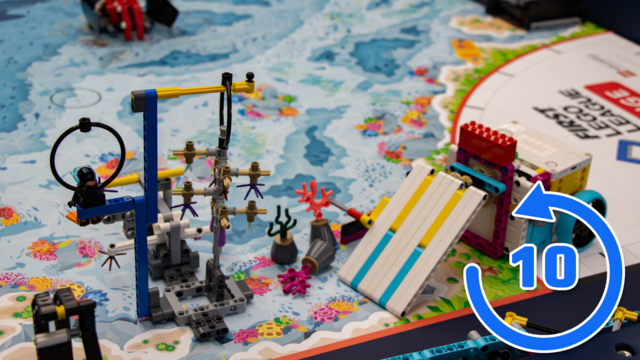

This video tutorial focuses on accomplishing M01 Coral Nursery and M03 Coral Reef of the FIRST LEGO League 2024-2025 SUBMERGED Challenge using the Nautiq box robot (a LEGO Education SPIKE Prime robot). The aim is to see a consistent accomplishment by lifting the coral tree to the coral tree support and delivering reef segments outside the launch area in one smooth sequence.
The robot uses a motor-powered attachment to lift the coral tree precisely while a side holder secures the collected reef segments. This ensures both missions are completed without losing any pieces during movement. You can watch the full explaining tutorial here.
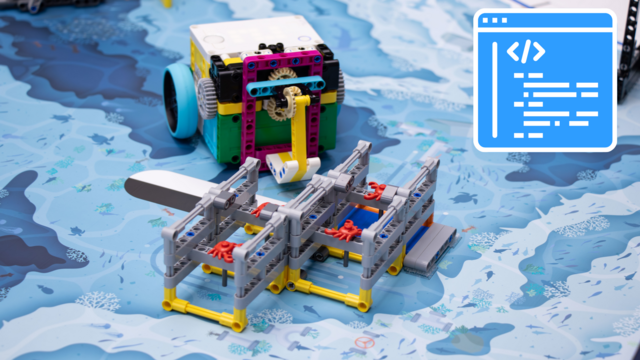

This programming tutorial focuses on accomplishing M8 Artificial Habitat of the FIRST LEGO League 2024-2025 SUBMERGED Challenge using the Nautiq box robot (a LEGO Education SPIKE Prime robot).
The sequence is optimized to position all four crabs upright with their yellow bases touching the mat for maximum points. The code uses straightforward but highly accurate movement commands, ensuring the robot engages and adjusts the mission model with precision. This dedicated program minimizes errors and allows for consistent high-scoring runs, combining efficient programming with the attachment’s reliable design.
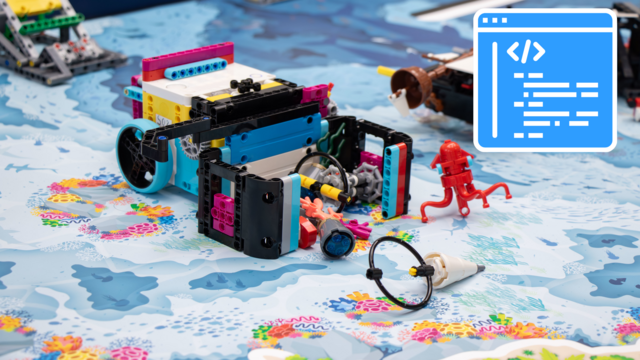

The programming process for accomplishing M05 Angler Fish, M09 Unexpected Encounter, M14 Sample Collection, M12 Feed the Whale, and M03 Coral Reef of the FIRST LEGO League 2024-2025 SUBMERGED Challenge is streamlined, making it easier to manage even in a large multi-mission run. The design of the two-part attachment system significantly influences how the robot moves, simplifying the code and reducing complexity.
The program is surprisingly simple for such a comprehensive run, with the robot performing a series of maneuvers to collect, deliver, and push mission elements. For maximum accuracy, it uses gyro turns, slow acceleration, and reduced speed in trickier spots to maintain control. By letting the attachments guide much of the interaction, the programming remains clean and reliable, enabling the robot to handle multiple scoring tasks efficiently in a single trip.
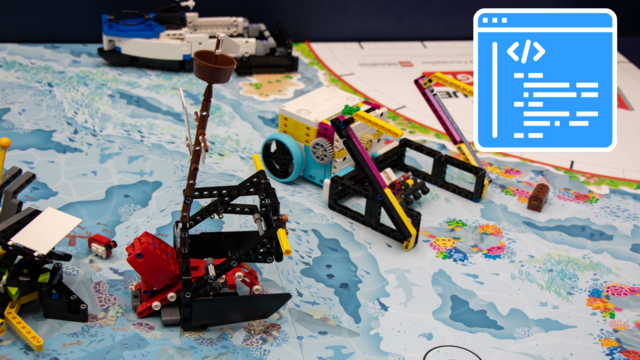

The programming process for accomplishing M06 Raise the Mast and M07 Kraken’s Treasure of the FIRST LEGO League 2024-2025 SUBMERGED Challenge is streamlined, focusing on controlled movement and precision. The design of the attachment ensures that the mast is lifted to the correct height while the treasure chest is securely captured.
The code uses simple maneuvering to reach the mission model, but the return path requires special handling. If the robot makes a sharp turn, the chest can be lost, so the program uses light steering to maintain stability while returning to base. This combination of straightforward navigation and careful return control ensures consistent success for both missions in a single run.
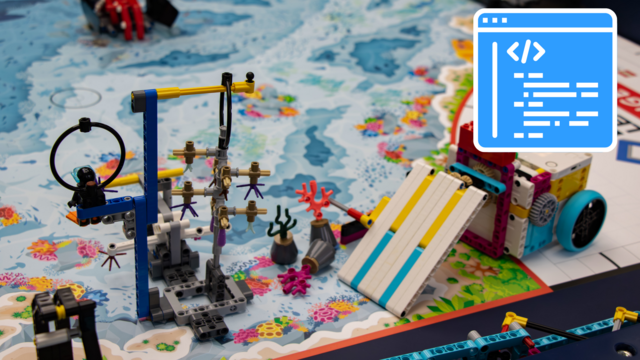

The programming process for accomplishing M01 Coral Nursery and M03 Coral Reef of the FIRST LEGO League 2024-2025 SUBMERGED Challenge is straightforward, focusing on controlled movement and stability. The motor-powered attachment lifts the coral tree smoothly to the coral tree support while also delivering reef segments outside the launch area.
The robot moves forward to position itself, raises the coral tree, and then returns to base. To ensure the reef segments remain secure during the run, the program uses slow acceleration and reduced speed when needed. This simple yet reliable approach keeps the sequence easy to execute while maintaining consistency in performance.
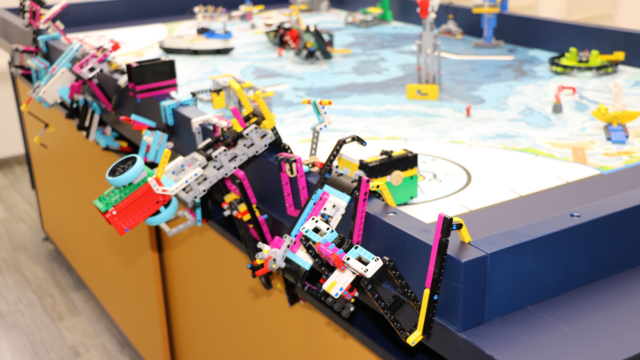

In this tutorial, we share a tip for organizing robot attachments in the FIRST LEGO League challenge. By designing attachments to hook onto the table edge, you can keep them close at hand for quick swaps, saving time and reducing mistakes.
Options include building hooks into the attachment design or using small separate hooks. This method is used by many teams and is a practical way to stay organized during competitions.
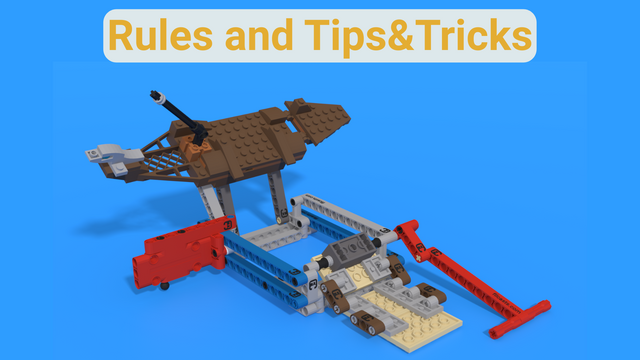
Sand is considered completely cleared when the pull activator is past the line on the mat.
No Equipment Constraint: The mission model cannot earn points if it is touching equipment at the end of the match.

Building instructions for a VEX IQ attachment for throwing balls with rubber bands.

Building instructions for a LEGO Mindstorms EV3 robot base. The attachment of the motors is quite interesting. We follow the angles of LEGO technic to attach them. This construction has some difficulties turning to the left and to the right. But if you have to take on an obstacle that high this is one of the options.
You can use all kinds of wheels on this robot - EV3, NXT or others. It doesn't actually matter.

This is a simple robot, variation of the Earl bot using treads. You can use the attachment to kick balls sideways. The robot is useful in STEM classes where students have to construct robots quickly.

This is an attachment for the cases where you need a two touch bumper sensors. It could be placed on almost any LEGO Mindstorms EV3 robot.

You can't play basketball without a hoop. So here are the building instructions of a Basketball hoop built with LEGO Mindstorms 51515 Robot Inventor set. The other things you'll need to play this game at your own home are a Mindstorms/Duplo ball, which is included in the set, and, of course, a robot. This hoop construction was created to be used with the smallest Inventor robot Tricky and its Basketball attachment. When you are ready with the constructions, you have to program the robot and start playing. Who will score more points in this robotics basketball game?
You can find the LEGO set, with which this was built, by following this link.
You can find constructions created to play with Tricky, by following the links below:

You know those constructions that you need to push or pull something and you get a cool chain reaction, right? Here are the building instructions of such a Chain Reaction built with LEGO Mindstorms 51515 Robot Inventor set. This construction was created to be used with the smallest Inventor robot Tricky and its Kick the ball attachment. The goal is to program the robot to kick the Mindstorms/Duplo ball, included in the set, so that the ball could push the lever and start the chain reaction.
You can find the LEGO set, with which this was built, by following this link.
You can find constructions created to play with Tricky, by following the links below: